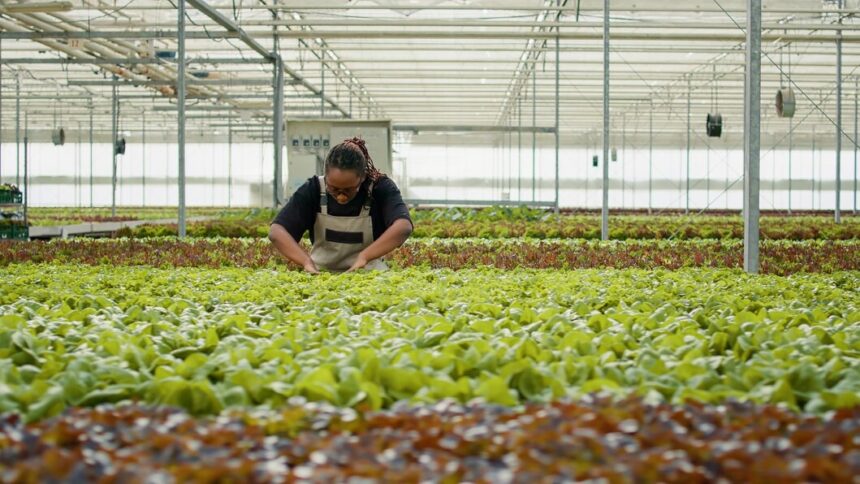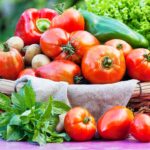Greenhouse farming is gaining popularity among South African farmers, offering an innovative solution for growing crops year-round, regardless of seasonal changes. This farming method enables farmers to maintain controlled environments, increase crop yields, and mitigate the risks associated with unpredictable weather conditions. Whether you’re a small-scale farmer or managing a large commercial farm, greenhouse farming can help improve productivity, reduce pest and disease outbreaks, and extend the growing season for high-demand crops. Here’s an in-depth look at the benefits, processes, and considerations for greenhouse farming in South Africa.
1. What is Greenhouse Farming?
Greenhouse farming involves growing plants in structures made of transparent or translucent materials (such as plastic or glass) that allow sunlight to enter while creating a controlled environment for optimal growth. Within this structure, farmers can regulate factors like temperature, humidity, light, and water supply, which gives them greater control over crop production compared to traditional open-field farming.
In South Africa, greenhouse farming is especially useful for crops like tomatoes, cucumbers, peppers, lettuce, spinach, herbs, strawberries, and flowers.
2. Benefits of Greenhouse Farming
2.1. Year-Round Production
With a greenhouse, farmers can grow crops throughout the year, extending production beyond the typical growing seasons. This helps increase food supply during off-seasons when outdoor farming is not viable, offering consistent market availability.
2.2. Climate Control
South Africa experiences varying climatic conditions, from frost and cold winters in certain areas to excessive heat and drought in others. In a greenhouse, you can control the temperature, humidity, and light exposure to suit the specific needs of your crops, ensuring optimal growing conditions year-round.
2.3. Higher Yields
Greenhouse environments promote faster and healthier plant growth due to the controlled conditions. This results in higher crop yields compared to traditional farming, making greenhouse farming more economically viable over time.
2.4. Water Conservation
Greenhouse farming typically utilizes more efficient irrigation systems, such as drip irrigation, which reduces water waste. This is especially important in regions of South Africa prone to droughts or water restrictions.
2.5. Reduced Pest and Disease Incidence
Greenhouses offer a barrier to pests and diseases, which reduces the need for pesticides and herbicides. This results in healthier crops and lower production costs.
3. Key Considerations for Greenhouse Farming
3.1. Choosing the Right Greenhouse Structure
The type of greenhouse structure you choose will depend on factors like your budget, the crop you intend to grow, and the climatic conditions in your region. There are several types of greenhouse structures available, including:
- Tunnel Greenhouses: These are typically made of steel frames and covered with plastic sheeting. They are cost-effective and ideal for small-scale farmers.
- Gothic Arch Greenhouses: These structures have curved roofs that allow for better water runoff and snow shedding (important in cold regions).
- Venlo Greenhouses: These are larger, more expensive greenhouses commonly used in commercial farming. They are highly durable and offer excellent control of the growing environment.
3.2. Site Selection and Orientation
Your greenhouse should be built on level ground, with good drainage and access to water. The orientation of the greenhouse is also crucial. In South Africa, greenhouses are typically aligned east-west to maximize sunlight exposure during the day.
3.3. Ventilation
Good ventilation is essential in a greenhouse to maintain temperature control and prevent the buildup of excess humidity, which can lead to mold growth or fungal diseases. Install roof vents, side vents, and exhaust fans to regulate air circulation.
3.4. Heating and Cooling Systems
To maintain an optimal growing environment throughout the year, you may need heating systems (especially for winter crops) and cooling systems (for hot summer months). Heaters, shade nets, and cooling fans can help regulate the internal temperature.
4. Crops Suitable for Greenhouse Farming
Certain crops are particularly well-suited to greenhouse farming in South Africa. These include:
- Tomatoes: One of the most popular greenhouse crops, tomatoes thrive in a controlled environment where temperature and humidity can be adjusted for optimal growth.
- Leafy Greens (Lettuce, Spinach, Kale): Leafy greens grow faster and are more tender when cultivated in greenhouses.
- Cucumbers: Greenhouse farming helps produce straight, healthy cucumbers with less pest pressure.
- Peppers: Greenhouse environments support uniform growth and higher yields of bell peppers.
- Strawberries: Controlled humidity and temperature in a greenhouse allow for consistent strawberry production, even during off-seasons.
5. Greenhouse Management: Inputs and Technology
5.1. Irrigation Systems
Greenhouses commonly use efficient irrigation systems like drip irrigation, which conserves water while ensuring that the crops get adequate hydration. Some farmers also use automated systems that are connected to sensors, which monitor soil moisture levels and provide water only when necessary.
5.2. Fertilization and Soil Management
Most greenhouse crops require a balanced nutrient supply to achieve high yields. Fertilizers should be carefully managed to avoid over-fertilization, which can lead to nutrient imbalances. Organic matter such as compost and manure can be incorporated into the soil to improve its structure and fertility.
For hydroponic systems (soil-less farming), water-soluble fertilizers are delivered through the irrigation system, supplying nutrients directly to the plant roots.
5.3. Pest and Disease Management
While greenhouses offer some protection from pests, they are not entirely immune. Integrated Pest Management (IPM) practices should be adopted, including regular monitoring for pests, introducing beneficial insects (such as ladybugs), and using biological controls when necessary. Fungicides and pesticides should be used sparingly and only when absolutely necessary.
5.4. Lighting
For crops that require more light than natural sunlight can provide, supplemental lighting (LED or fluorescent lights) may be necessary. This is especially important for winter growing or in regions with shorter daylight hours.
6. Economic Benefits of Greenhouse Farming
6.1. Higher Profit Margins
With the ability to grow high-demand crops year-round, farmers can supply the market during off-seasons when prices are higher. This can significantly improve profit margins, especially for crops like tomatoes, strawberries, and peppers.
6.2. Reduced Input Costs
Greenhouses reduce the need for pesticides and herbicides by creating a more controlled environment. The efficient use of water through drip irrigation systems also helps cut down on water usage, lowering costs.
6.3. Employment Opportunities
Greenhouse farming often requires skilled labor to manage the controlled environments, creating jobs in rural areas. Employees may be involved in crop management, harvesting, packaging, and marketing.
7. Challenges of Greenhouse Farming
While greenhouse farming offers many advantages, there are challenges to consider:
- Initial Investment: Building a greenhouse, especially a high-tech one, can be expensive. However, the long-term gains in productivity can offset the initial costs.
- Management Requirements: Greenhouses require constant monitoring and management to ensure that temperature, humidity, and irrigation levels are optimal.
- Pest and Disease Control: While greenhouses reduce the risk of outdoor pests, they can still be prone to fungal diseases and other issues if not properly managed.
Greenhouse farming is a viable option for South African farmers looking to increase crop production, improve water use efficiency, and grow crops year-round. By investing in the right greenhouse infrastructure and understanding the specific needs of each crop, farmers can achieve higher yields and profitability. As the demand for fresh produce grows, greenhouse farming offers a sustainable, efficient solution for the future of South African agriculture. With the proper management, farmers can turn their greenhouses into highly productive and profitable enterprises.
Join 'Farmers Mag' WhatsApp Channel
Get the latest Farming news and tips delivered straight to your WhatsApp
CLICK HERE TO JOIN






